Comparing Camembert and Brie reveals major differences. These two French cheeses, though alike in appearance, differ in many ways, and in total I think there are 6 main ways they are different.
From taste, size, rind, production, pairing and flavor. I have compared below, and provided an easy reference table.
The History of Camembert and Brie
For centuries, the world has been eating Camembert and Brie. A farmer in Normandy, France during the French Revolution invented Camembert. Brie dates back to the eighth century and was loved by the rich in Île-de-France. Both these cheeses are famous all around the world.
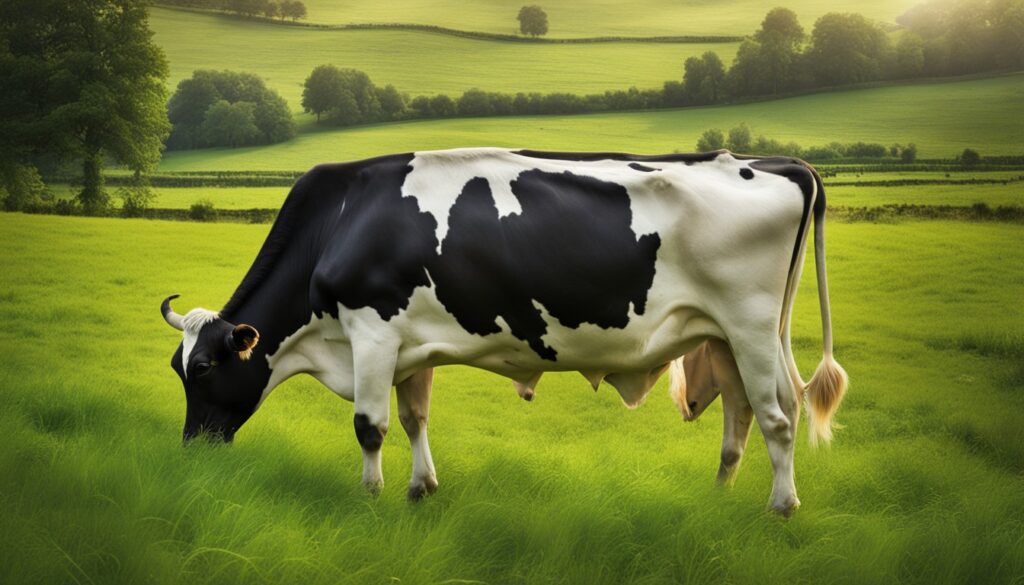
Camembert’s story revolves around Marie Hamel, a farmer in the French Revolution era. She learned from a priest from Brie, adding mold that makes Camembert unique today. Brie, made since the 8th century, was favored by nobles in Île-de-France. Both cheeses became more widely loved over time.
Camembert and Brie became symbols of French cheese. They are known for their delicious tastes, feels, and smells.
Camembert vs Brie: The 6 Main Differences
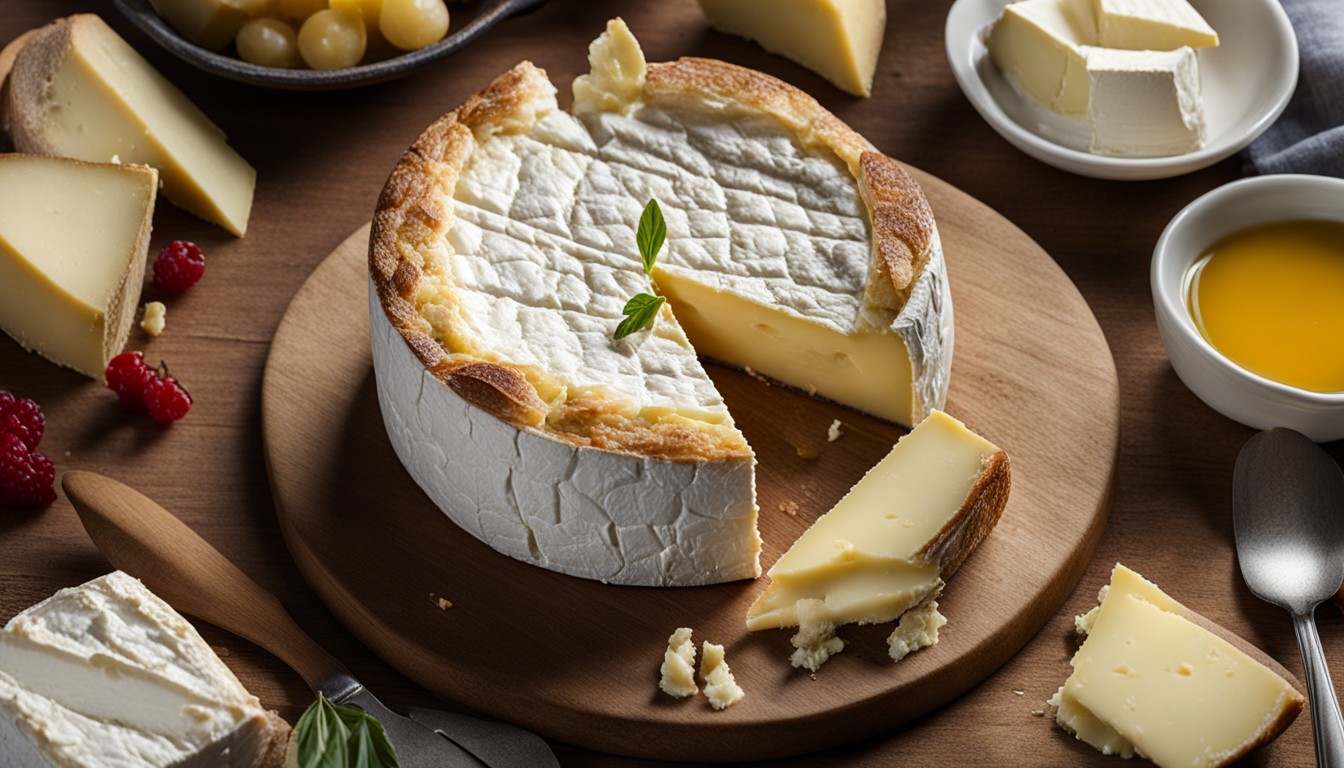
Comparison Table on Camembert vs Brie
| Camembert | Brie | |
|---|---|---|
| Flavor | Earthy, mushroomy, slightly pungent | Mild, buttery, hints of sweetness and nuttiness |
| Taste | Robust, earthy, truffle and barnyard aromas. Unami but less sweet than Brie | Creamy, mild, sweetness and nuttiness /Unami |
| Size | Smaller and thicker (250 grams or 8 ounces) | Larger and flatter (1 kilogram or 2 pounds) |
| Serving and Pairing | Versatile, pairs well with fruits, nuts, breads, and cured meats | Versatile, pairs well with fruits, nuts, breads, and cured meats |
| Production Process | Stronger lactic starters, aged for a minimum of three weeks | Cream incorporated into the recipe, aged for four to six weeks |
| Rind Development | Speckled with red or brown spots | Less speckled, pale yellow |
Camembert Versus Brie Flavor
The taste of Camembert is very different from that of Brie. Camembert has an earthy, mushroomy and slightly pungent flavor while Brie is more mild, has a creamy butter taste, and a bit of sweetness.
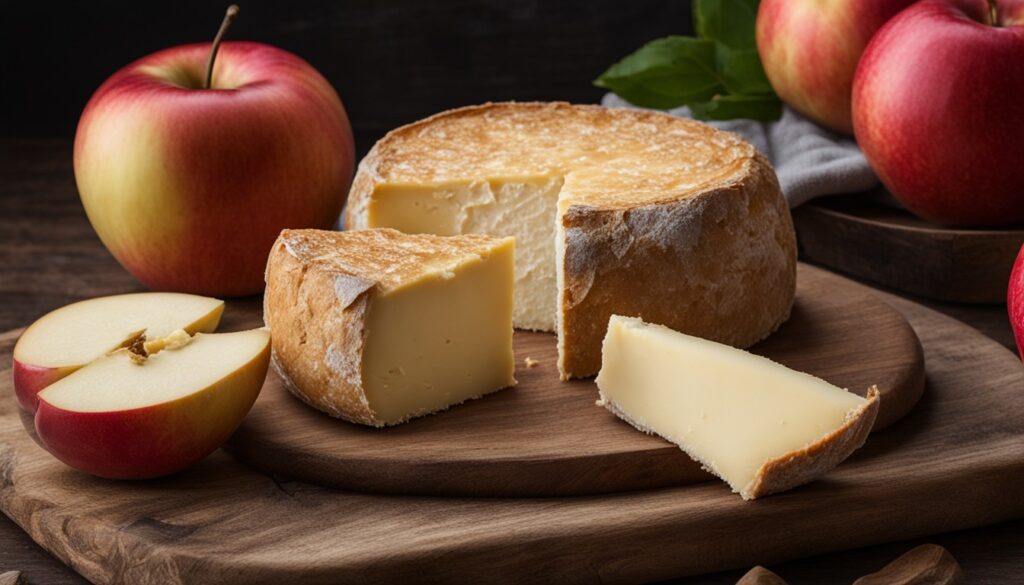
Many people love the rich and earthy flavor of Camembert. It tastes like mushrooms but with a little bit of sharpness which makes it more complex than other cheeses.
On the other hand, Brie cheese is much lighter in comparison to its French cousin. It’s creamy, smooth and buttery all at once while having this unique sweet nutty taste that makes one want another bite right away!
If you prefer strong flavors go for camembert, brie offers a different experience due its delicate creaminess; nevertheless both are amazing when paired appropriately or sometimes I just eat them on their own!
Camembert Versus Brie Taste
Taste Profile Comparison
Many people believe flavor and taste are the same thing. But there is a slight difference between Camembert and Brie, although both Unami. Camembert has a strong earthy flavour with some truffle and barnyard smells. On the other hand, Brie is creamier and milder in taste, with a hint of sweetness and nuttiness. Knowing these taste distinctions can help you choose the right cheese for yourself.
Let’s delve deeper into what gives Camembert and Brie their unique taste:
Camembert Taste: Boldness is what sets apart this French cheese from others; it has an intense flavor which may be described as fungal or mushroom-like due to its aging process. This also imparts richness with sour notes. Some people might detect scents such as truffles or even farm yards, it is certainly distinctive. Of the 5 tastes Camembert is Unami and Bitter.
Brie Taste: Brie is all about being smooth and gentle next to Camembert. It’s got a buttery creaminess with a touch of sweet. You may find it a little nutty too. Brie’s mild taste lets it fit in many dishes or be enjoyed on its own. Of the 5 tastes Brie is Unami and Sweet.
If you prefer stronger flavors then I’d recommend going for camembert while those who like their cheese smoother would prefer Brie.

Camembert Versus Brie Sizes comparisons
Size is another distinguishing factor when it comes to comparing Camembert against Brie. A Camembert is usually smaller and thicker, about 250 grams. Bries, on the other hand, are larger and flatter, weighing about 1 kilogram .
Due to its size, Camembert feels denser and creamier. It’s perfect for eating on its own or with crackers. Brie’s size means it’s softer and more delicate. So it is great for sharing or for making melted cheese dishes like baked Brie. (My all time favorite dinner time treat!) 🙂
As Camembert is smaller it looks great on a personal cheese board, Brie is a bit too large for that unless sliced. Brie is therefore also better as a display piece at events.
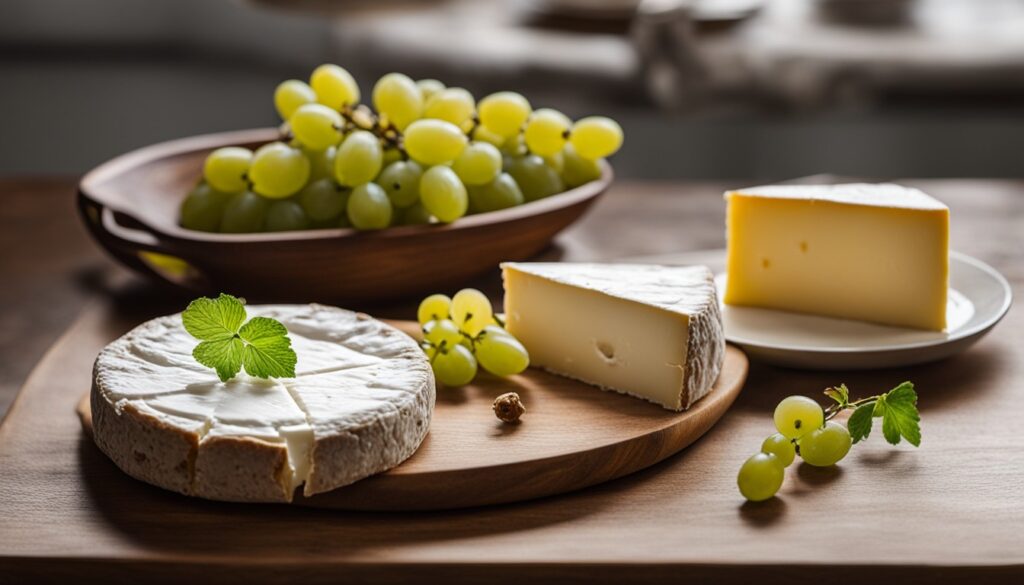
Camembert Vs Brie Serving and Pairing
I use Camembert and Brie in many different dishes. They have very different taste to most other cheese, so whether it’s a cheese board or cooked with, I find they make really distinctive meals.
Pairing these cheeses with certain foods can really bring our the flavor of the Cheese and other ingredients. For Camembert and Brie, think about adding fruits like apples, grapes, or figs. These bring a sweet balance. Nuts, such as walnuts or almonds, add a nice crunch.
I love Crusty bread, crackers or on a French Baguette. Camembert and Brie also go well with meats like prosciutto or salami. This adds a salty touch that works with the creamy cheeses.
You can get creative and cook with Camembert and Brie too. Melt them on bread or use them in sandwiches. They’re also good in dishes like quiches or pastries. This adds a creamy, rich taste.
Make them part of a cheese board with fruit, nuts, and meats. It looks nice and lets everyone try different flavor combos.
Due to its stronger flavor and aroma, Camembert pairs well with robust red wines, Normandy cider, or even a stout beer, which can complement its rich flavors. Brie, being milder, pairs beautifully with champagne, a light red wine, or even a fruity white wine.
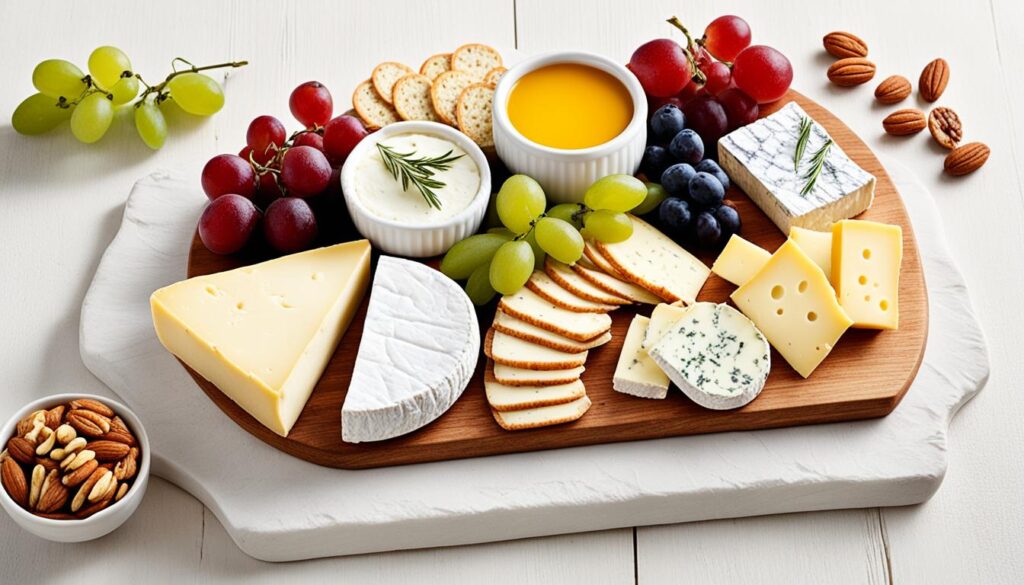
| Cheese | Recommended Pairings |
|---|---|
| Camembert | Fresh sliced apples, grapes, walnuts, crusty baguette, prosciutto |
| Brie | Figs, sliced pears, almonds, crackers, salami |
Camembert Vs Brie Production Process
The making and aging steps of Camembert and Brie is another factor that really brings out the difference
Camembert Production Process
Special Bacteria is used when making Camembert. The primary bacteria used in the production of Camembert cheese is Lactococcus lactis. This bacterium is crucial for the initial fermentation process, during which it helps to convert lactose into lactic acid. This acidification process is important for the development of the cheese’s texture and for creating conditions favorable for the growth of mold. Once the curds form, they go into molds then the whey is taken out. After adding some salt, the cheeses sit in a cool, damp place for at least three weeks. Here, a white, soft rind grows. Inside, changes happen to give the cheese its unique taste and touch.
Brie Production Process
A main difference in the production process is with Brie, they mix in cream. This is what creates the smoother, softer taste in Brie. Firstly, the cheese maker heats the milk and introduces bacteria. In doing this, the milk begins to coagulate. From there, the cheese curds are manipulated; they are placed in cloths and either washed or pressed before being salted and aged for around a month and a half –– that way Brie gets extra creamy. The longer it’s left the more pronounced the buttery taste.
The aging process is key for both Camembert as well as Brie cheeses.
Brie is generally aged for 5-10 weeks, Camembert less at more like 3 weeks.
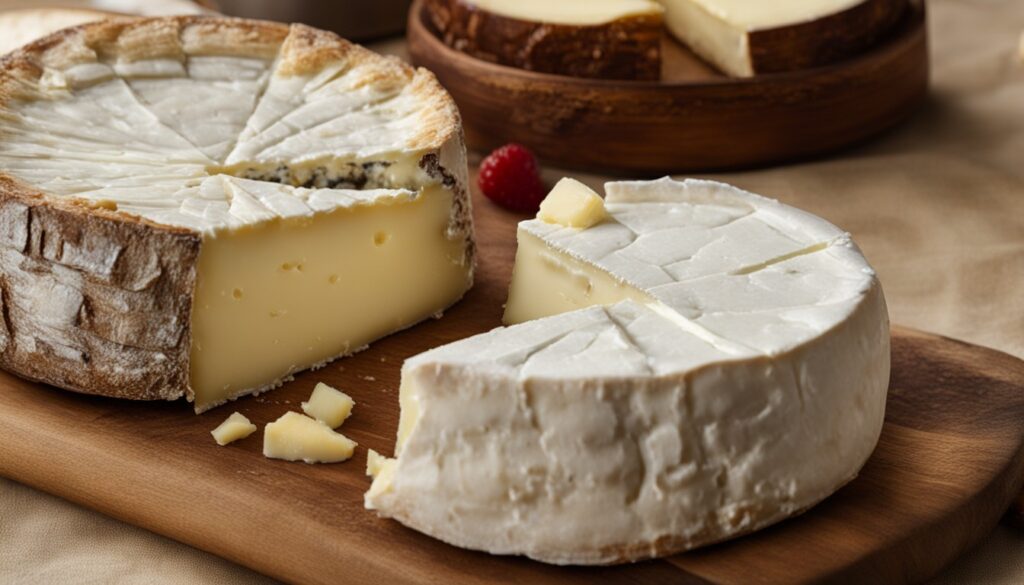
Rind Development
Camembert and Brie have a bloomy rind. Their look and how they grow are different. Camembert has red or brown spots on its rind, while Brie has less and a pale yellow look. Learning about the bloomy rind helps us know the taste and feel of these cheeses.
The bloomy rind is vital for Camembert and Brie. It’s the soft, white mold on the cheese’s surface. This mold, Penicillium camemberti, makes these cheeses unique.
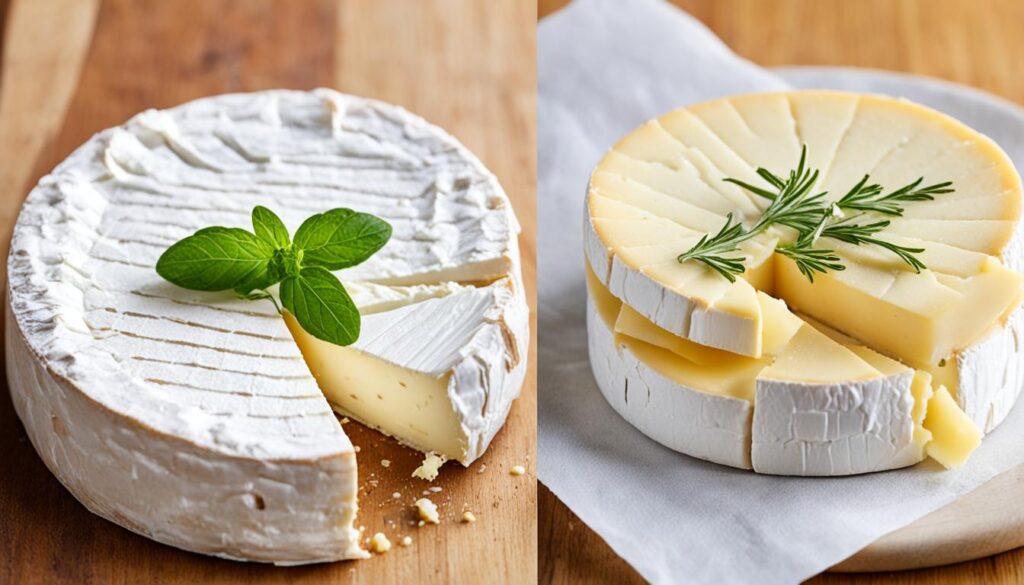
As it ages, Camembert may gain reddish or brownish spots. These marks illustrate that the cheese is getting ripe. The mold helps create a soft and velvety rind.
Brie, on the other hand has a smoother rind with fewer spots than camembert, it is also a more yellowy color and velvety too. This layer of mold helps in keeping the cheese moist thus giving it its creamy texture.
The rind develops depending on factors such as humidity levels, age of the cheese as well as temperature. The rind causes interaction between fungi and bacteria thereby creating different flavors and textures for these types of cheeses.
Conclusion
Camembert and Brie are both soft cheeses with a ripened, bloomy rind. Yet, they are quite different, offering unique tastes. They vary in taste, size, and how best to serve them. The way they are made and how their rinds develop also differs. This makes each cheese special in its own way.
Know the differences between Camembert and Brie to pick the right one for you. Camembert has a bold, earthy taste. Brie, on the other hand, is creamy and buttery. Choosing between them is all about your liking.
When exploring French cheeses, consider the unique tastes and textures of Camembert and Brie. Enjoy trying them with fruits, nuts, or bread.

